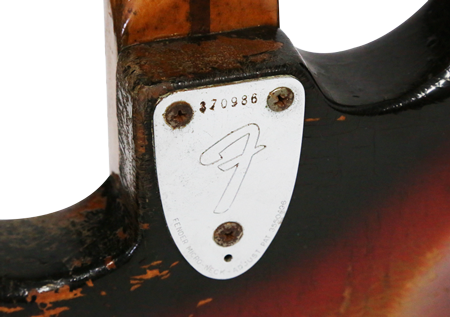Teisco Serial Number Dating
Teisco Serial Number Dating. 3/28/2018 0 Comments The history of the goes all the way back to 1946 with the formation of the Japanese company Aoi Onpa Kenkyujo by Atswo Kaneko and Doryu Matsuda. The year 1948 marked the first introduction of the Teisco brand with its first lineup of products including mics, amps, and a lap steel guitar.
- Teisco was a Japanese budget brand that produced guitars starting in the late '40s. By the early '60s, Teisco guitars became increasingly unique with a.
- Rolex Serial Numbers with Production Dates. These sets of numbers, for example 28000 for the year 1926 or Z000001 for year 2006, are inscribed by machine on the side of the watch case between the lugs at 6 o’clock (see below). It is very helpful to know the official Rolex production date to help us determine its market value.
Teisco was a brand of musical instruments manufactured in Japan from 1946 until 1969. The company produced beginner electric guitars, adding the “Teisco Del Ray” brand in 1964. Not well known for quality or playability, they are sought after for their sometimes bizarre designs and collector's fascination with classic kitsch.
Teisco Background
Although Teisco guitars were cheaply made and inexpensive, they developed a strong collector following starting in the 1990s. Alternative and indie rock and blues guitarists with a propensity for odd instruments rediscovered Teisco guitars, which could be purchased at yard sales and pawn shops for well under $100. Kawai Musical Instruments, the owner of the Teisco name, recognized the trend and resurrected the brand in the early 90s with moderate success.
Teisco was unusual in that they manufactured models of their own design, as well as knock-off copies. It is the Teisco Del Ray original design guitars that attract collectors, as many other manufacturers produced knock-offs of equal or greater quality. Collector values for Teisco originals are largely set by market demand of specific models.
Teisco SD-4L
The unusual Teisco SD-4L of 1963, featured four pickups and eight switches, in addition to the standard volume, tone and pickup switches. This vinyl-clad, tremolo equipped guitar is among the most sought after for Teisco collectors, and can fetch $300-900.
Teisco May Queen
Teisco Del Ray “May Queen” of 1968 is another coveted model, with prices also in the $300 to $800 range. The semi-hollow oval shaped guitar featured two pickups, volume, tone and pickup selector switch with tremolo system.
Serial Number Lookup
Tesico TRG-1
The TRG-1 was an innovative guitar, with built in amplifier and speaker. Also sold under the “Kay” and “Silvertone” brands available through Sears, the TRG can fetch from $200 to $500. Jackson Brown used a TRG-1 for his 2002 tour, sans the built-in amplifier, which sparked new interest in this unique model.
Teisco Tulip

The E-120 and ET-200 are commonly known as “Tulip” guitars. Compact and lightweight, these instruments are recognized for their distinctive tulip-shaped body and simple electronics. Tulips are collectible and plentiful, and can be found in the $50 to $150 range.
Teisco Spectrum 5

The obscure and rare Spectrum 5 model was a higher-end Teisco Del Ray. With a solid walnut body and hand-lacquered finish, the Spectrum 5 sported unusual electronics including three split-pickups, mono and stereo outputs, and color-coded pickup selector switches. Spectrum 5 guitars are at the top of the collector value scale, with examples in good condition going for $ 500 to well over $1000.
Teisco Buyers Beware
Bear in mind that most Teisco instruments were inexpensive beginner models, produced during a period when imported products were not quite up to modern standards. Many of these instruments have been modified or stripped of parts over the years, but with a strong following and used parts available through collector and auction sites, support and interest in Teisco Del Ray guitars is going strong.
Teisco Del Rey
In 1964, the company name changed again, this time to Teisco Co., Ltd. At some point in ’64 the Japanese Teisco logo changed from the circle Swan-S to a stylized, modern sans-serif type set in an italicized T shape.
In about 1964, Jack Westheimer began bringing in Teisco guitars bearing the Teisco Del Rey logo. This had an italicized Teisco superimposed over a crown with a script Del Rey underneath, backed by a round circle. Occasionally, you may see plain Teisco logos from this period with the crown in the background, but no Del Rey.
Del Rey, of course, is Spanish for “of the king,” which explains the crown. This was no doubt added to the Teisco name, in part, to suggest quality. However, it was also a way to add the de rigeur Spanish cachet necessary for “Spanish” guitars of the time. It was convention that “Spanish” guitars carried Spanish names, except for the well-known brand names – Gibson, Fender, Martin or Kay; thus the plethora of imported guitars named Greco, Ibanez, Goya and Espa